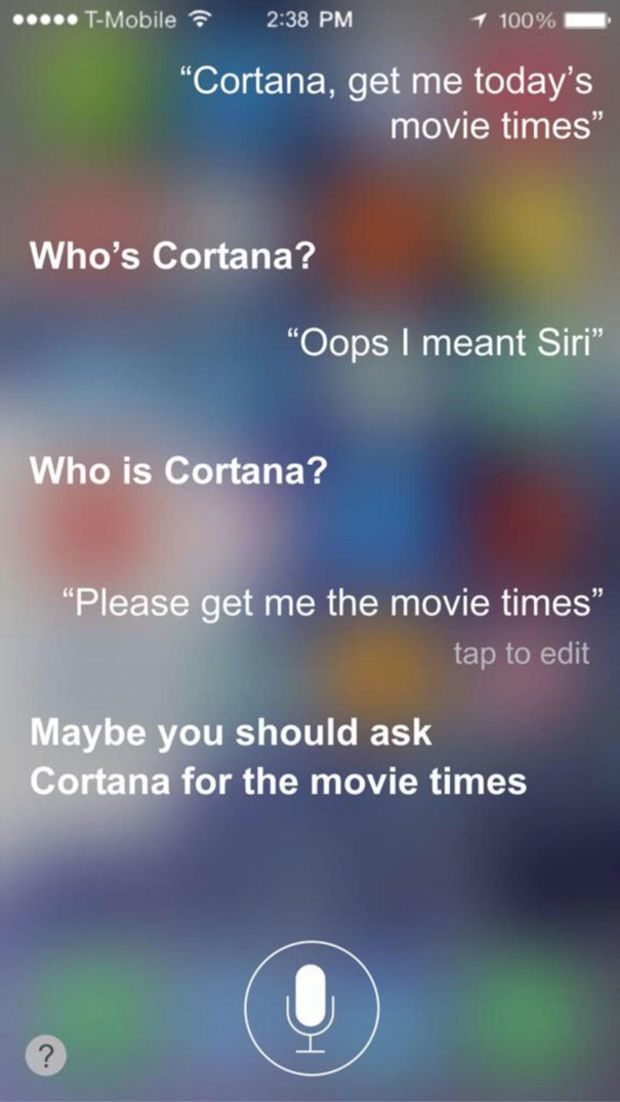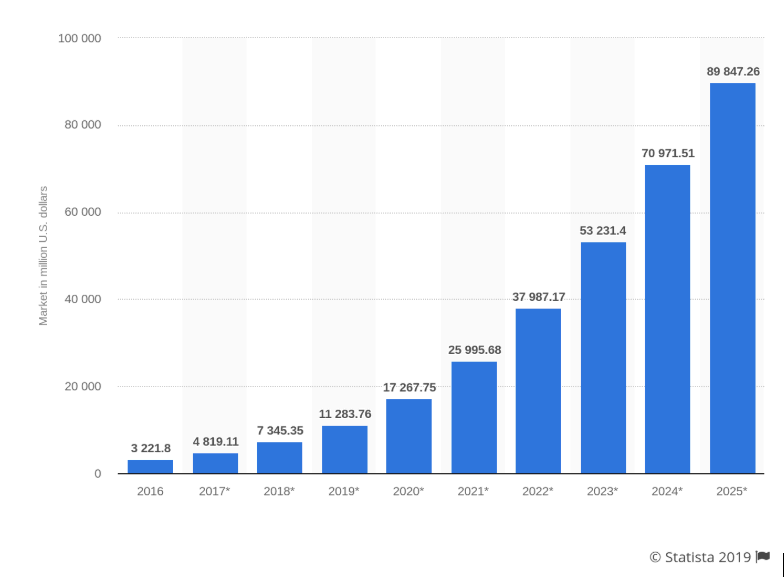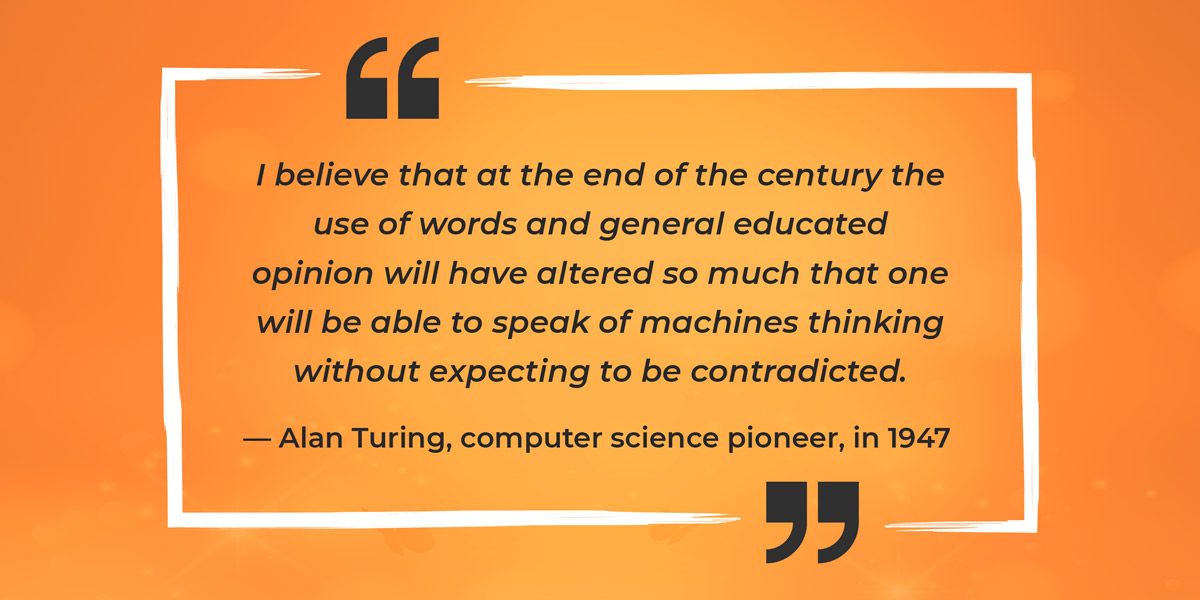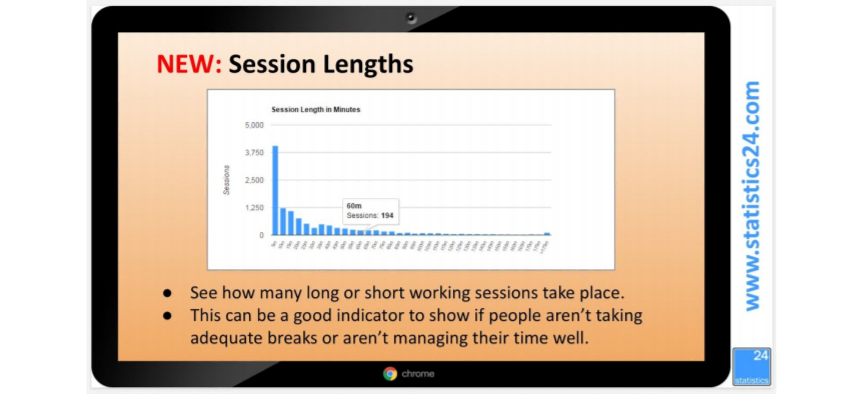Smarter Learning: How artificial intelligence is transforming education #AI

You know you are in the digital age when you have to intervene between two robots arguing in your home, as happened to me recently when my Google Home Hub believed my Google Assistant on my Pixelbook was speaking to it rather than to me and they started misunderstanding each other.
It struck me that I was in a very 21st century moment, asking two robots to listen.

As with all new technology there will be new challenges, and opportunities, and where artificial intelligence is concerned, history would suggest the latter far outweighs the former.
For anyone concerned about what artificial intelligence (AI) and automation might mean for their jobs they should remember that you cannot uninvent the internet.
You can’t choose not to do technology. As Tolkien once noted, ‘The wide world is all about you: you can fence yourselves in, but you cannot forever fence it out’.
The question for educators is how can we use AI to make life better, and make learning smarter?
What’s AI got to do with blockchain?
Both are buzzwords that are appearing everywhere and in both cases are usually equally misunderstood. Academics have long appreciated the value of defining things to aid common understanding, so when it comes to AI before we proceed, let’s do that.
Perhaps the most useful definition of AI I’ve found to date is simply ‘the theory and development of computer systems able to perform tasks normally requiring human intelligence’.
Where those tasks are highly structured with clear protocols, parameters and rules, like manufacturing or the law, artificial intelligence is likely to have the biggest impact and there are few aspects of life it won’t touch.
It’s not about the future, it’s happening now, and it’s already shaping the lives of learners entering college today whether they are aware of it or not.
It is my contention that for educators artificial intelligence might represent the greatest solution since the sticky note (check out sales of sticky notes and you will see why I say that).
Google X laboratory wizard Astro Teller (born Eric, but I am with him on the name change), once said “Artificial intelligence is the science of how to get machines to do the things they do in the movies”.
Just as when I was younger and wondered if there would ever come a day when you could type a question into a computer and it would just answer it (rather than have to program it), what once seemed like science fiction is becoming reality, and fast.
We are now talking to devices, and the devices are connected to other devices, and they are learning and on occasion talking between themselves.
It is unlikely that the Stanford University Professor, John McCarthy, who is credited with creating the term ‘artificial intelligence’, could have foreseen the connected internet of things and their wider possibilities for innovation.
Personally I don’t like the term as it is arguably not accurate. Rather I prefer the term augmented intelligence as this both avoids any negative connotations associated with the word ‘artificial’ and more positively suggests the role AI is playing in supporting knowledge development and acquisition.
Children born into developed countries today will have little to no experience of a world without AI or the internet of things, and our world of education must enable them to make the most of it.

For those who may be fearful of AI replacing them in the classroom, they can rest assured it will need human help to have positive impact. In the same way that the book or the pencil didn’t replace a teacher either.
AI is in its infancy and like all human development it will make mistakes, sometimes with amusing results. The automated inspirational quote generator ‘Inspirobot’ uses AI to produced inspirational quotes, including such gems as “Sometimes a human sacrifice is nothing but a human sacrifice”.
Well quite, and if that doesn’t fire you up on a Monday morning when heading to work what would?
It also created such gems as “Seek success, but prepare for vegetables’” and “Wait for others to follow, or don’t”. Well at least it tried.
More well established AI tools such as Amazon’s Alexa have also had their moments, as Hamburg resident Oliver Haberstroh found out to his cost when it started playing loud music at 1:50am when he was away, leading his neighbours to call the police to stop the ‘party’.
They entered his property by force discovering Alexa in a party of one, unplugged it, fitted a new lock and left leaving Oliver to visit the police upon return and pay a hefty locksmith bill. Never let it be said that Alexa doesn’t know how to have fun.
My personal favourite epic fail when it comes to AI applications to date relates to its application to images and specifically Google photos which includes a little known feature using AI to match backgrounds and attempt to merge them into a single panoramic image.
One image of a ski resort using this tool went viral when a user was attempting to merge two images of similar landscapes with an image of a friend and in doing so it decided his friend resembled a mountain. As you can see from the image below, it doesn’t disappoint.

Perhaps the ultimate AI fail to date was Microsoft’s ‘Tay’. The original concept was a noble one designed to enable greater understanding of conversational language. Tay was launched on Twitter with the idea that it would chat and interact with tweets.
It’s first tweet was along the lines of how cool humans are. However in less than a day Tay was removed from Twitter for praising Adolf Hitler, posting racist tweets and denying the holocaust happened. Perhaps a positivity weighting should have been applied to the algorithm to avoid negative bias.
AI, just like any new invention, should be challenged on the basis of what the unintended consequences might be. Thankfully when it comes to education the application of AI has far less potential for controversy and far greater potential to make a positive impact.
Indeed it is already doing so, and it’s future potential is massive. For clues as to how significant AI is, and is going to be, take a look at the insights from associated global trends.
According to research from KBV in their report on the global artificial intelligence market (2018-2024) the market for AI is estimated to grow to more than $32 billion by 2024. Not small change.
The driver for this explosive growth is organisations leveraging the benefits of increasing engagement with people through more personalised bespoke experiences.
As Seth Godin once stated, we don’t want email, we want ‘me-mail’. Ask yourself if Facebook became so large because people are interested in others, or themselves?
The truth is that for most people the most important thing in their lives is their life. Services tailored in an extremely personal way to individual passions, behaviours and learning styles will yield vastly different results to those that deliver standardised linear structured solutions based on industrial models of conventional efficiency.
The work that companies like CENTURY Tech are doing around applying AI to create personalised learning pathways through English and Maths provision are fascinating examples of how this approach is having impact, and for those seeking to connect with people doing it Basingstoke College of Technology are just one example where this is being applied.
Size of global AI market
A report by PwC estimates that AI will generate more than $15.7 trillion to the overall global economy by 2030 and in the North American territory alone it is expected to boost GDP by 14%.
AI applications in the self-driving vehicle sector is expected to reach a value of $127 billion dollars by 2027. The table below shows the expected growth trend in the global AI market and the pace of growth is acclerating fast.
 Big business is adopting AI at an exponential rate and it is already in our lives making a positive difference. For me personally I love the way it has been embedded into GMail. GMail is used globally by more than 1.5 billion users and although it’s arguably the best email system available, and certainly the most secure, most people if pressed admit they don’t like emails. I certainly don’t.
Big business is adopting AI at an exponential rate and it is already in our lives making a positive difference. For me personally I love the way it has been embedded into GMail. GMail is used globally by more than 1.5 billion users and although it’s arguably the best email system available, and certainly the most secure, most people if pressed admit they don’t like emails. I certainly don’t.
According to the Radicati Group more than 205 billion emails are sent each day and it feels like most end up in my inbox. However GMail now has AI embedded and it has learnt how I talk and respond, and I have seen it get better and better to the point where I estimate it is now saving me approximately 40% of my time responding to emails.
It will soon be more than half, and I can’t wait for the day when my Google Assistant handles all of them because time is the most precious commodity we have. Calculate all educators having 40% of their emails automatically complete and that is quite some time saving.
“One of our big goals in search is to make search that really understands exactly what you want, understands everything in the world. As computer scientists, we call that artificial intelligence”. – Larry Page.
Google has now deployed apps that include functionality like the ability for AI to recognise what a learner might be drawing, and to augment it. The educational value of this I have seen first hand in building confidence and engagement, it’s quite a thing to see.
Additionally artificial intelligence and its associated technologies has the capacity to take predictive analytics to unprecedented levels. Supercomputer Nautilus predicted the location of the hiding place of Osama Bin Laden during the Arab spring uprising to within a few hundred yards and it can analyse over 100 million articles from 1945 to the present day in seconds to predict future trends. Predicting the top 10% of students likely to drop out or where to find the 10% of students required to grow doesn’t pose a major challenge.
As AI becomes more embedded in our world students will be able to experience a learning process that is massively tailored to them. From the course content to the pace of learning, it will be differentiated in a way that transforms knowledge and skills discovery and acquisition.
Staffordshire University recently launched their Beacon App that uses AI and becomes something of an AI coach to students. Beacon has a capacity to learn and adapt over time to support both retention and progression.
Whilst Staffordshire University is taking a leading approach to the adoption and progression of such technologies, this will increasingly become a more mainstream trend over time just as online learning has.
![]()
As AI becomes more a part of our world increasingly teachers and support staff will be able to secure unprecedented insights into students at an individual level enabling more strategic targeting in terms of resource allocation.
So if your organisation is still taking a one size fits all approach to things like pastoral sessions you are quite literally wasting your resources because chances are 80% of your students don’t need a specific intervention, but do you know exactly who the 20% who do are?
This is not something for the future, it is now, and there are an increasing number of organisations already using such technology and securing the benefits it brings.
EdTech innovators like Texthelp are powering ahead with how AI and analytics can make a positive difference including reducing subjectivity in assessment where appropriate to do so.
Martin McKay, Chief Technology Officer at Texthelp commented;
“Another technical trend we’re seeing, particularly in regard to assessment, is using technology and AI to make ongoing regular assessment faster and easier for teachers and also to try to take out some of the subjectivity from assessment. For example, if you give a student a writing task and you have 10 teachers assess that writing task you’ll probably get 10 different scores. The technology we’ve been working on will not only create the national norms but will try to remove some of the subjectivity from writing assessment using AI and statistical approaches”.
It’s not difficult to see how for those with an interest in equality and diversity, AI will be the greatest equaliser to come along in living memory. AI has the potential to eliminate unconscious bias in key aspects of the learning process. No bad thing. It also has the potential to eliminate human error in the marking process.

#LearningNext: When you want, at a time and place tailored to you.
Most people have a natural biorhythm of how they work and understanding this has a massive impact on learning. For my part I know that I am most productive in the morning and late at night. I don’t do afternoons. The Spanish siesta makes sense to me.

Given this is how humans are, it’s not difficult to see how unnatural our structured world of education timetables is, and how it makes no sense if we are really claiming that learning is the priority.
If your organisation claims to put students and learning at the heart of everything it does but then hands students a timetable demanding they fit into a structured set of time slots for something they could have done more easily online and in a way more tailored to how they learn rather than your administrative processes then over time those learners will simply find someone else who can provide that flexibility.
AI enables educators to secure the insights necessary to tailor the learning process at an individual level. For some this will mean more one to one time face to face, for others much greater self directed learning.
It was reasons that like this that motivated me to co-create the Google analytics company Statistics 24 back when I was working in a college and could see the potential for predictive analytics to provide insights to both students and educators that could increase engagement.

Whether it is reducing workloads (especially on tasks like marking or responding to emails) or providing bespoke support tailored to those with higher or more complex needs AI and associated technologies are empowering educators to work more intelligently today.
The old analogue way of doing things won’t serve educators in the digital age. Most senior leaders I meet in education get this, but are often a little daunted on how they enable their colleagues to embrace it. The solution is actually in some ways quite simple. Literally.
“As a technologist, I see how AI and the fourth industrial revolution will impact every aspect of people’s lives.” – Fei-Fei Li Professor of Computer Science, Stanford University.
Brilliant technology is simple. If technology is simple to use and makes life better the foundations for success are already there. Too often technology is overly complex and it’s benefits badly articulated leaving leaders in education to wonder what they invested in and why.
Seeking out trusted advisors with no hard sales or embellished claims of impact is always a smart move as is remembering that it’s all about people, not technology.
When it comes to emergent disruptive technologies it’s critical we approach it in the right way. Innovation requires experimentation which requires a failure rate, by definition.
There is no perfect technology that somehow magically enables 100% success. If there was every stock broker would make perfect decisions. Expecting a new technology to somehow transform your organisation is no different to expecting a pencil to do it.
Technology is just a tool but like any tool in the hands of a master artisan it can create value. Technology doesn’t replace educators, it augments them.
For those who fight against its use they will find their journey no different to the long gone ‘knocker upper’ profession that existed at a time when alarm clocks were neither inexpensive or reliable, a practice that struggled on through the Industrial Revolution until progress did what progress inevitable does.
Artificial intelligence is shaping our world and making it smarter. The trend is as inevitable as change itself. For educators seeking to engage and retain their students extremely personalised learning journeys are critical. Young people already expect this type of relationship because it’s what they experience in their digital lifestyles.
The good news about AI is that it is so simple to use in most cases. Companies have invested billions of dollars into the complex computer science behind the development so people can access and harness the potential in a friendly way.
Given how available AI applications now are, looking forward it’s hard to imagine how a college or university can claim to put students at the heart of what they do without a clear strategy of how they will be using AI solutions available today to achieve it.
Michael Crichton was right when he said he’d rather see artificial intelligence than no intelligence. Technology can enable smarter learning and that is inherently a positive thing.
“Forget artificial intelligence – in the brave new world of big data, it’s artificial idiocy we should be looking out for.” – Tom Chatfield, Author and commentator.
Artificial intelligence is providing a new era of opportunities to enable educators to secure unprecedented insights into how we learn at a bespoke individual level. This will help to support engagement, differentiated practice and innovation. Rather than fear these tools, those in pursuit of outstanding teaching will use these tools to engage, enrich and inspire.
Whilst it is quite natural to fear the unknown and this will no doubt remain a cultural adoption barrier for some, like most change AI is nothing to be fearful of no matter how hard the populist media attempts to create sensationalist headlines promoting fear of robot armies intent on destroying us all in some AI enabled digital apocalypse.
Should the worst happen and robot armies do indeed attack, just find some stairs and climb them. They are still rubbish at that. In the meantime reach out and connect to educators and specialists making use of AI to enable smarter learning because as IBM understood long ago, a smarter planet is in everyone’s interest.
Jamie E Smith, Executive Chairman C-Learning













Responses